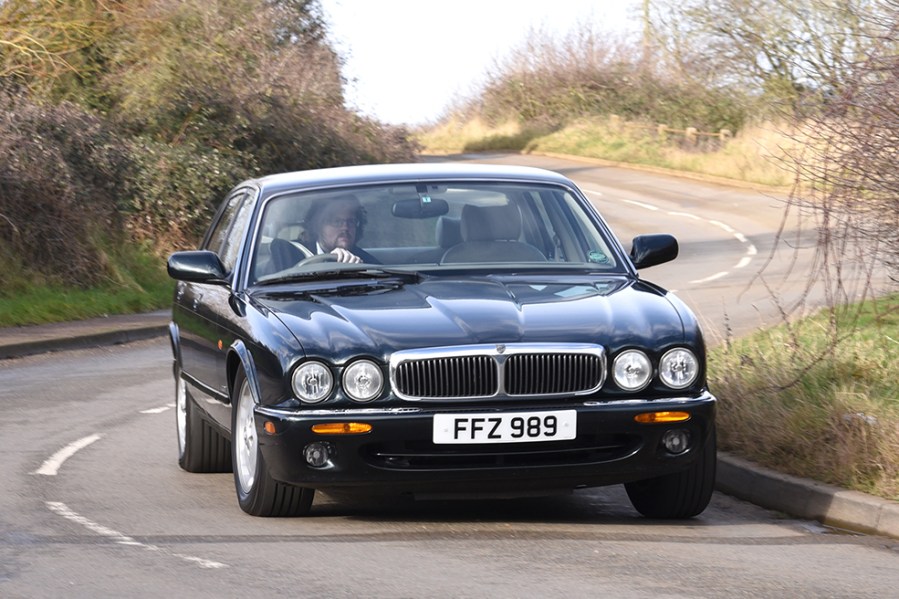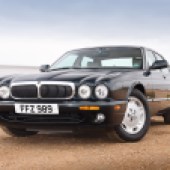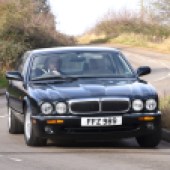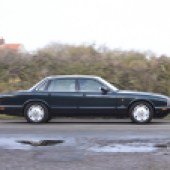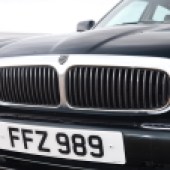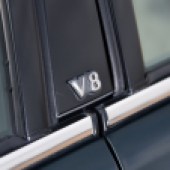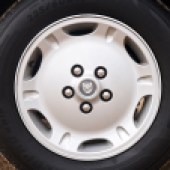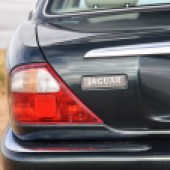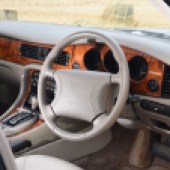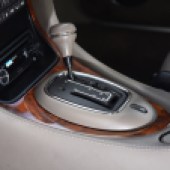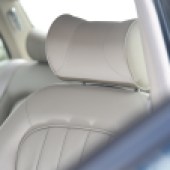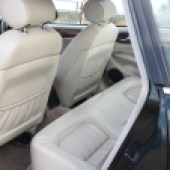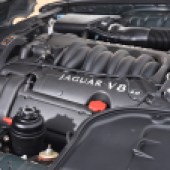The X308 XJ – the first-ever V8-powered Jaguar saloon – has enjoyed a mixed reputation. We get behind the wheel to see how it stacks up today
Words: Sam Skelton Images: Paul Walton
The Jaguar X300 wasn’t supposed to happen. After the aggressively styled XJ40, Jaguar’s intention had been to launch an all new saloon, with an all new V8 engine. Ford’s money men halted development of the saloon, termed XJ90, and proposed installing its new engine and front and rear ends onto the centre section of the XJ40 model. Great idea – except that the V8 wasn’t ready.
This would have been a problem for Jaguar. Both Mercedes and BMW had launched new models during the XJ40 reign and without a successor to its own solitary saloon Jaguar’s financial position would have become perilous. The stop-gap measure was to revise the existing six cylinder engine, apply the facelift to the shell, and release it onto the market until the V8 was ready. The X300 became one of Jaguar’s most successful production models relative to its time in the showrooms, but everyone at Browns Lane knew that the real story would follow just a few short years later.
That car, launched in August 1997, was the X308. On the outside, tiny V8 badges on the B-pillar let everybody know the score. For the more observant, there were new bumpers with oval shaped indicators and side reflectors in place of the rectangular units of the X300, new foglamps, a small crease to the bottom of the rear bumper, and new quarter blades to the bumpers which would end the chromium crease found in the centre after an owner had misjudged a parking space. Inside, everything was new for the X308, with dials recessed in XK8 style pods, new switchgear, and greater concession to ergonomic bliss. But the big news was under the bonnet. Each of the six cylinder variants – the 3.2, 4.0 and supercharged 4.0 XJR – was replicated in V8 form, now attached to five speed automatic gearboxes as standard and the start of a brief period whereby Jaguar would not offer a manual gearbox. The V12 was gone, and with it the XJ12 – the Daimler Double Six was replaced with a long wheelbase XJR-derived luxury liner called the Super V8.
Initial press was positive; with Autocar, Car and others praising the new engine’s refinement, power and relative economy. But soon, stories of a different nature entered the press. Nikasil coatings to the cylinder bores would wear away, and engine blocks would begin to erode. As if this wasn’t bad enough, timing chain tensioners and thermostat housings made of plastic would shatter. The new engine wasn’t shaping up to be as bulletproof as the older six. But with metal tensioners and thermostat housings available and revised bore liners from 1999, the majority of surviving examples can be made into classics just as reliable and long-lived as the outgoing model. Priced to compete with the BMW 5 and 7 Series, and the Mercedes E Class, Jaguar brought a sense of style to the party as well as the power and comfort the brand had become known for. The range evolved gently, though with no major changes until its replacement was launched in 2002. This car, the all aluminium X350, would be a very different type of XJ under the skin.
Today, many dismiss the XJ8 as the X300’s cheaper cousin, a facelift too far and a sign that Jaguars should come with six cylinders rather than eight. But here at Classic Car Mart, we think they’re missing out. In order to delve deeper, I borrowed this Japanese specification XJ8 4.0 from Kim Cairns Classic Cars, in Snettisham. Finished in Sherwood Green with Oatmeal trim, it’s almost the archetypal example. It may differ in the details from UK equivalents, but the overall driving experience shouldn’t be too dissimilar. Eagle eyed Jaguar spotters will note the XJ8 4.0 badges to the front wings, the Dimple alloy wheels nabbed from the UK spec X300 Executive, and the bootlid complete with square registration plate holder as marks that this car deviates from UK spec. Early UK 4.0s came with the chrome trimmings of this car, but with 17” Celtic alloy wheels. Later models were trimmed in a manner closer to the youthful 3.2 Sport, or optionally with the full chrome and interior ambience of the prestigious Sovereign.
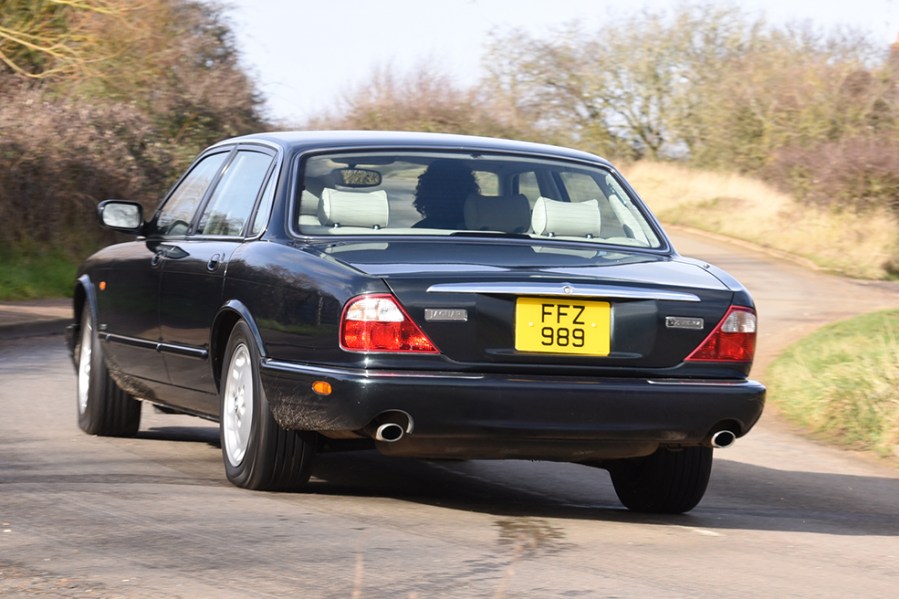
From outside, it looks little different to the X300 Sovereign I arrived in – I’ve owned six cylinder XJs for almost six years, and the cosmetic similarity is something I find pleasing. At the time it appeared slightly dated, too similar to the outgoing model, and yet today it’s a shape which has aged well. Inside, it’s far more logically laid out, even if the single piece mouldings for the dash and door cards on this model are in single, contrasting tones. The steering wheel and driving position feel cosily familiar, though the overall aesthetic is wildly different. The keys are identical too, to the point where I attempted to start this car with the key to my own Sovereign while moving it for the photographs. Only the changed remote fob gives the game away. The starter motors sound identical, but as the engine settles the slightly off beat V8 thrum is very different to the sporting six in my own car. It’s somehow smoother despite its configuration, and there’s less of a mechanical feel as you slip the car into D- on the J-gate.
Under the bonnet of this example sits the same 4.0 V8 you find in the XK8, with 290bhp and 290lb ft of torque. Those figures are rather nearer to the six-cylinder XJR than to the old 4.0 in naturally aspirated form, and as a result it’s disarmingly easy to chirp the tyres as you pull away. Once you remember just how much power is under your right foot it’s controllable, though, and one of the most serene cars on the road.
And on the road is where the XJ8 excels most of all. Its static qualities may be myriad, but once you’re moving it’s hard to believe you’re in a vehicle of its size and clout. Somehow, the ride manages to shame even the model it replaces, with less propensity to premature bush wear and the attendant clonking this induces from the rear end. It laps up the bumps beautifully, and it’s only when you get back into something else that you appreciate just how good the ride really is. There’s better body control, too, and the car feels less weighty and more poised than the older XJ6 models. Not surprising, with an average drop of around 200kg model for model, almost all of which was lost under the bonnet courtesy of that light and compact engine. That weight loss combined with the extra gear mean that the V8 is far more economical than the older car, too – we suspect that 30mpg might be a very real average possibility from this 4.0 V8, where a 4.0 six would average no more than 27.
But where it really comes into its own is when you chuck it into a corner. The older six was never exactly an unwieldy machine, but you were always aware you were driving almost seventeen feet of car. The V8 models, on the other hand, barely feel bigger than a 5 Series BMW, offering far greater driver confidence. The 370bhp on tap from the supercharged XJR must make for a mind blowing machine if a standard 4.0 feels quite this good. You don’t need to play with the manual control on the left hand side of the J-gate, but when you do the XJ almost moves like a sports car.
It feels unfair to compare this car to the one which came before – to judge it solely in the context of its predecessor, rather than as its own entity. And yet because of their similarity you can’t help but feel yourself mulling over their similarities and differences. The X300 is arguably more handsome in its details and certainly more traditional, but the X308 is sharper and smoother to drive, with the ergonomic rough edges gently honed away. It feels like an evolution rather than a revolution, and somehow that’s how Jaguars always feel best to us.
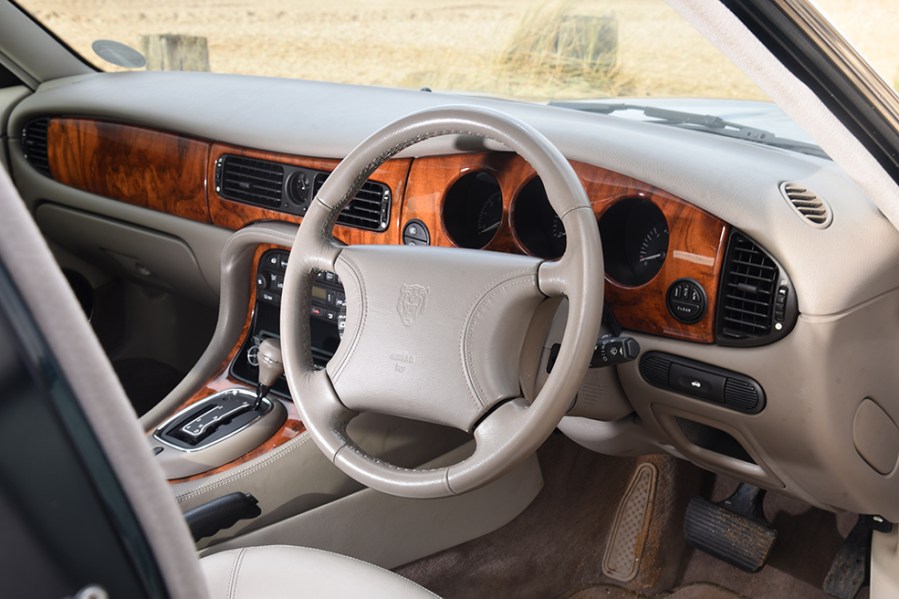
There’s scant space in the back if you’re tall, and if you take more than a toothbrush weekend luggage for two might not fit in the woefully inadequate boot space. Jaguar attended to these faults and more for the later X350, and it feels like it’s lost some of its sense of personality as a result. An X308 XJ8 might have been a mass produced model, but viewed against its German contemporaries such as the S-Class and the 7 Series it feels as up-to-date and as relevant as a Bristol; it’s separate transport for a separate kind of person. And that’s what makes it such a compelling classic today. In the BMW you feel like regional manager of the year. In the Jag, you feel like you own the company.
Jaguar XJ X308: our verdict
You don’t have to own the company to be able to afford the Jag. Today, you can get a reasonable X308 for £2500, and a very nice one for £5000 – double those figures if a supercharged XJR would be more your thing. The breadth of the range when new means there’s something for all tastes, from the youthful 3.2 Sport to the golf-club-captain-spec Sovereign, and the lord-of-the-manor Daimler with its fluted chromework and separate rear armchairs.
And while that doesn’t seem like a lot of money, consider this: in 2019 I bought two X308s, each for under £500. Both had issues, but even those cars would be knocking on the door of £1000 today. The market is slowly coming round to just how good these cars car be; buying at today’s prices will seem like a very canny decision in tomorrow’s world.
If you’re considering one, check for rust on all lower extremities and on the rear subframe, look through the history to heck it’s had the thermostat housing and timing chain tensioner replaced with metal units, and if an early car see if it’s had any work regarding the Nikasil bore liners. And make sure the toys work – these and the bodywork are the most expensive fixes, so it’s best to know everything’s okay.
It might be the model people shy away from, but the Jaguar X308 XJ is a performance and luxury bargain today – and a sure fire classic investment. Now is certainly the time to buy, and we heartily recommend that you should.

